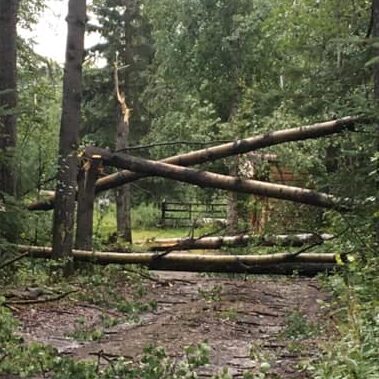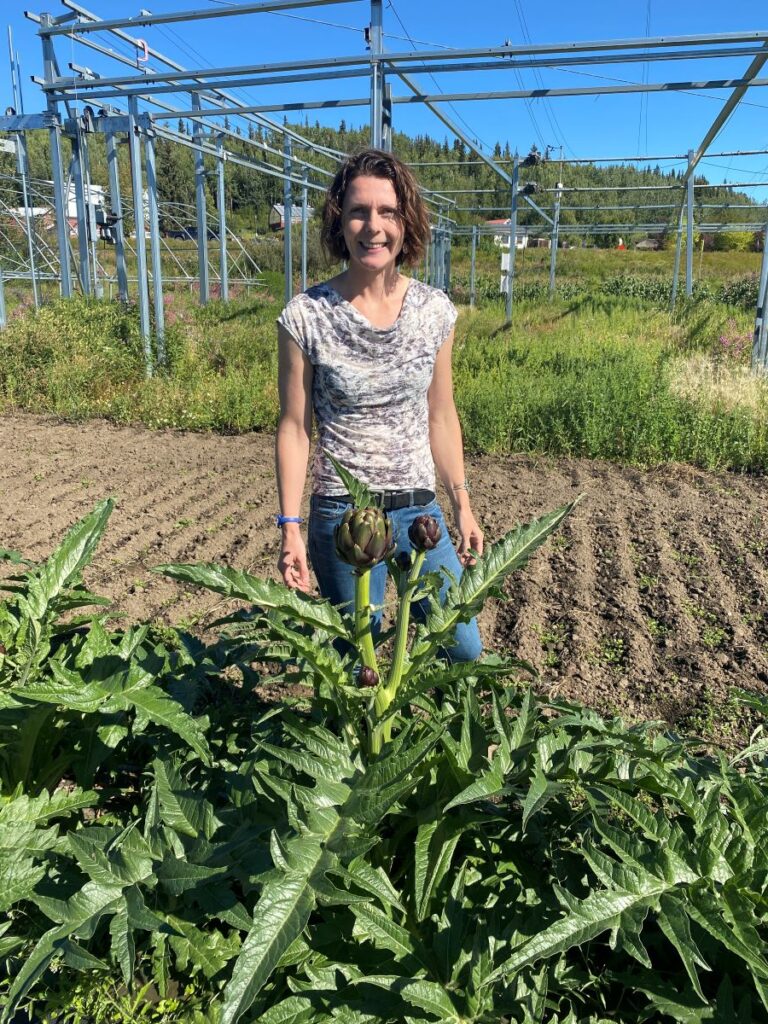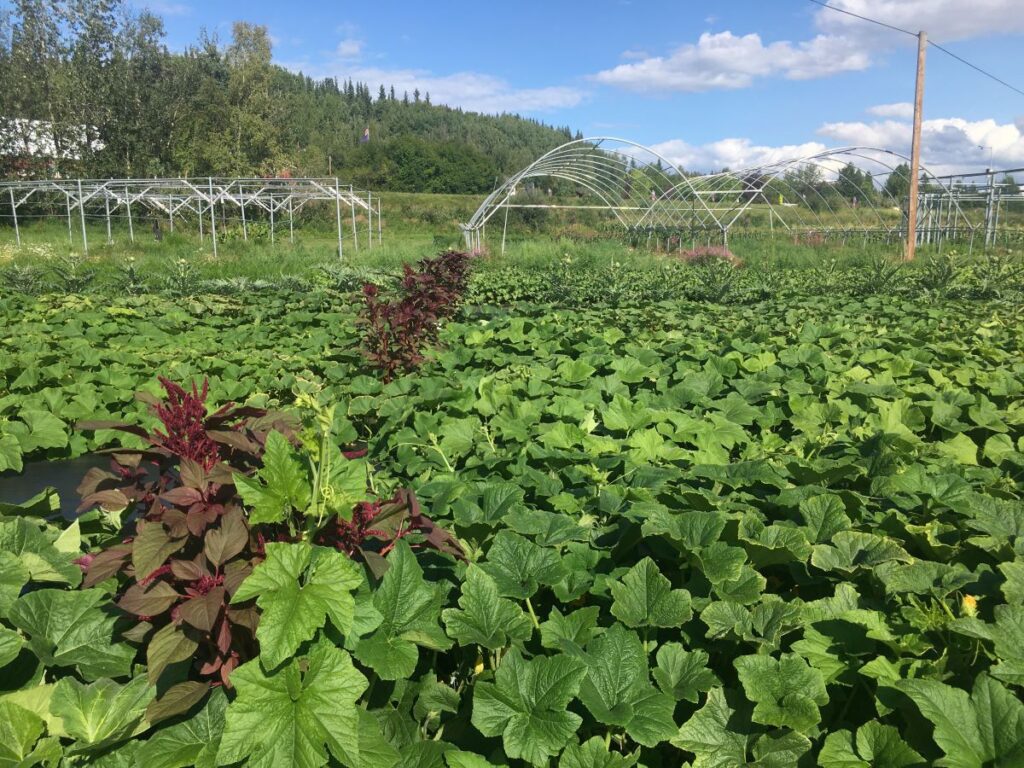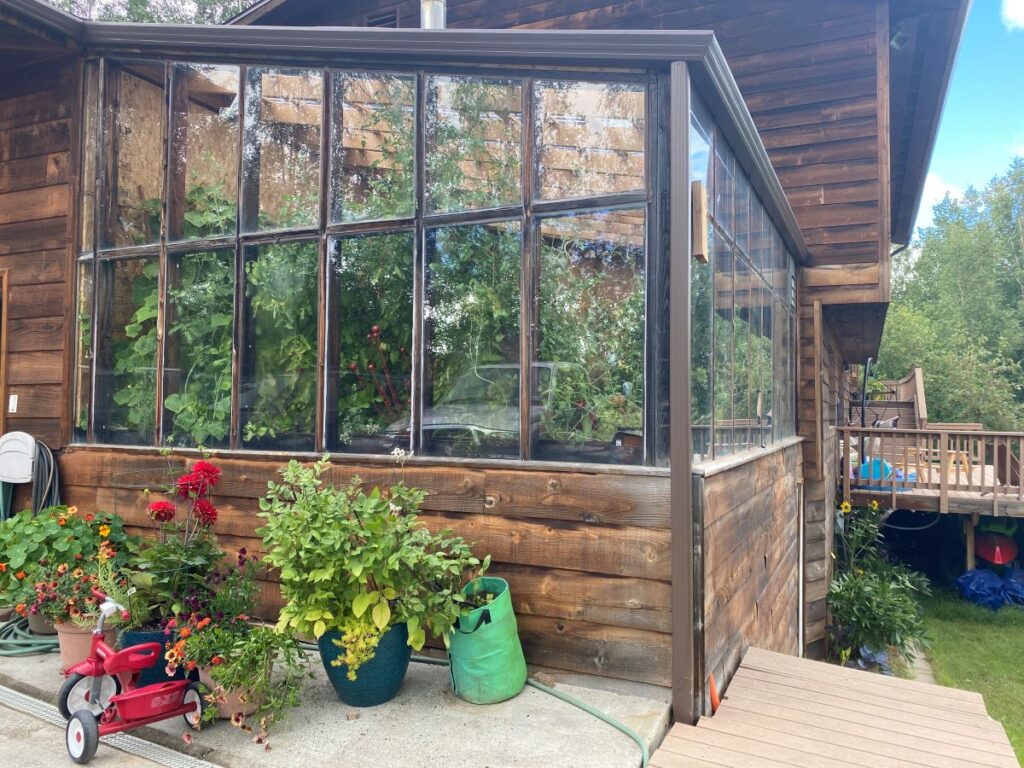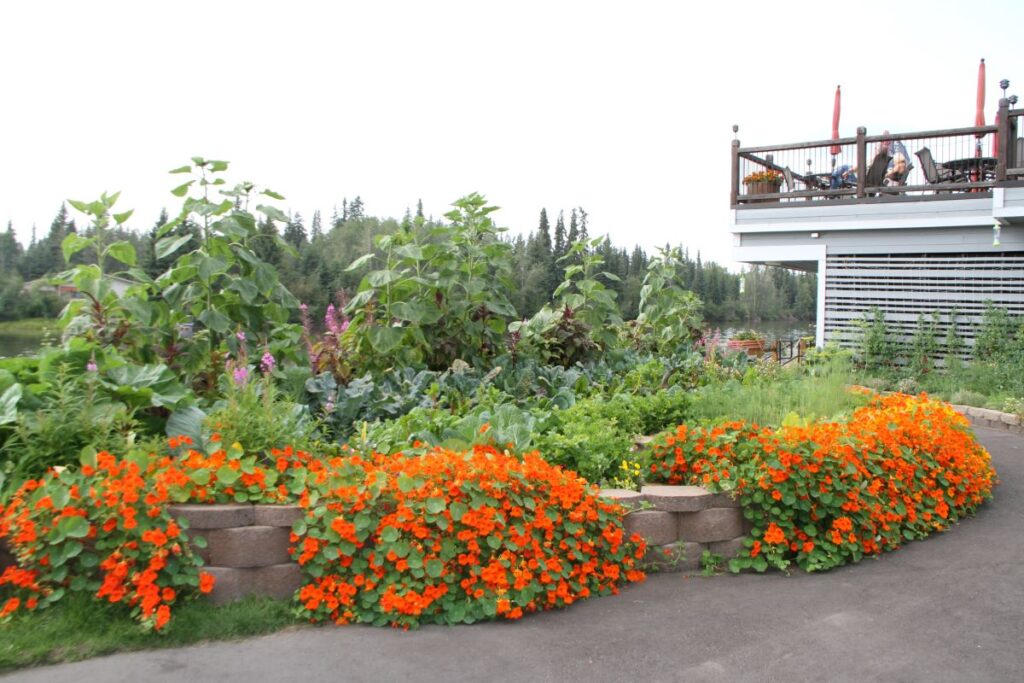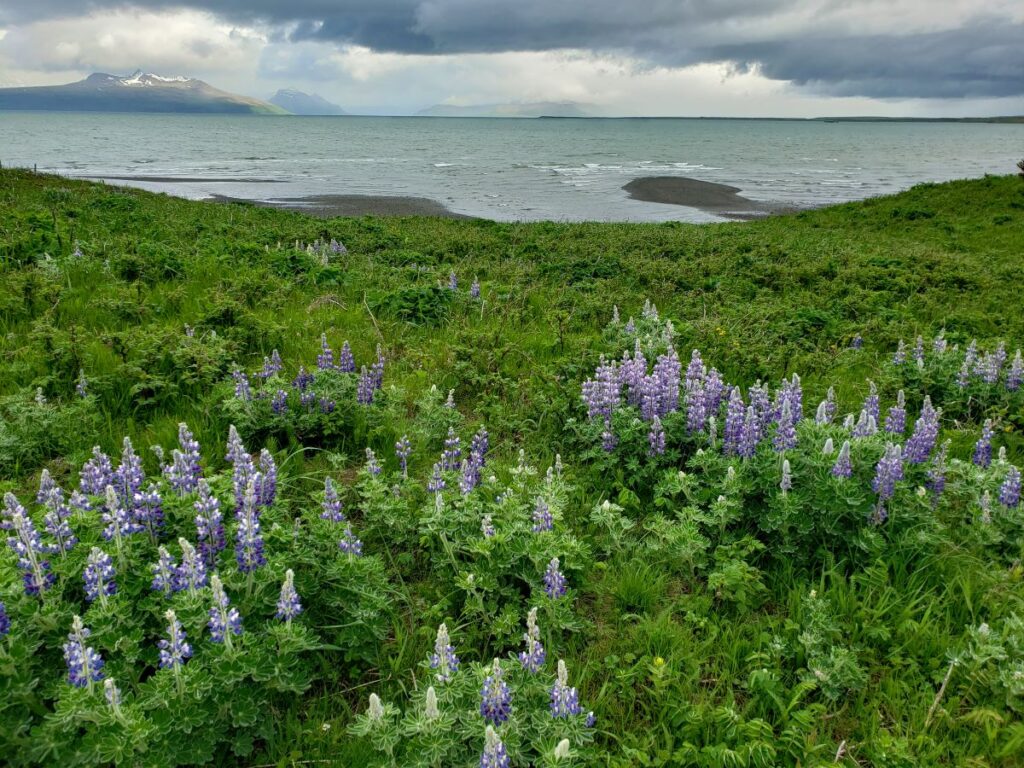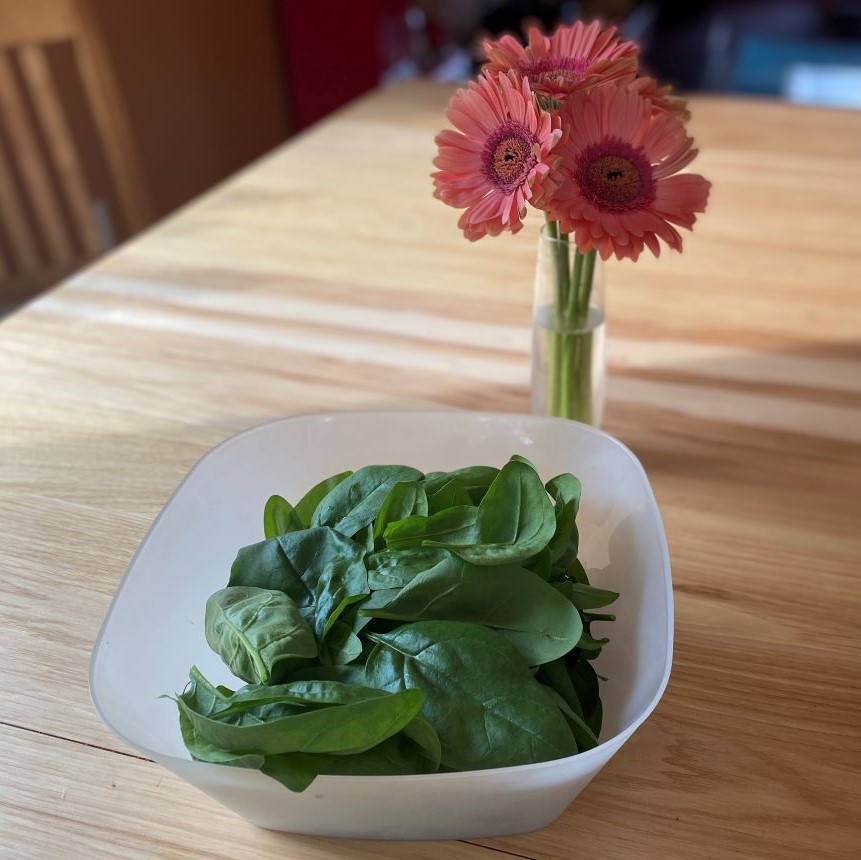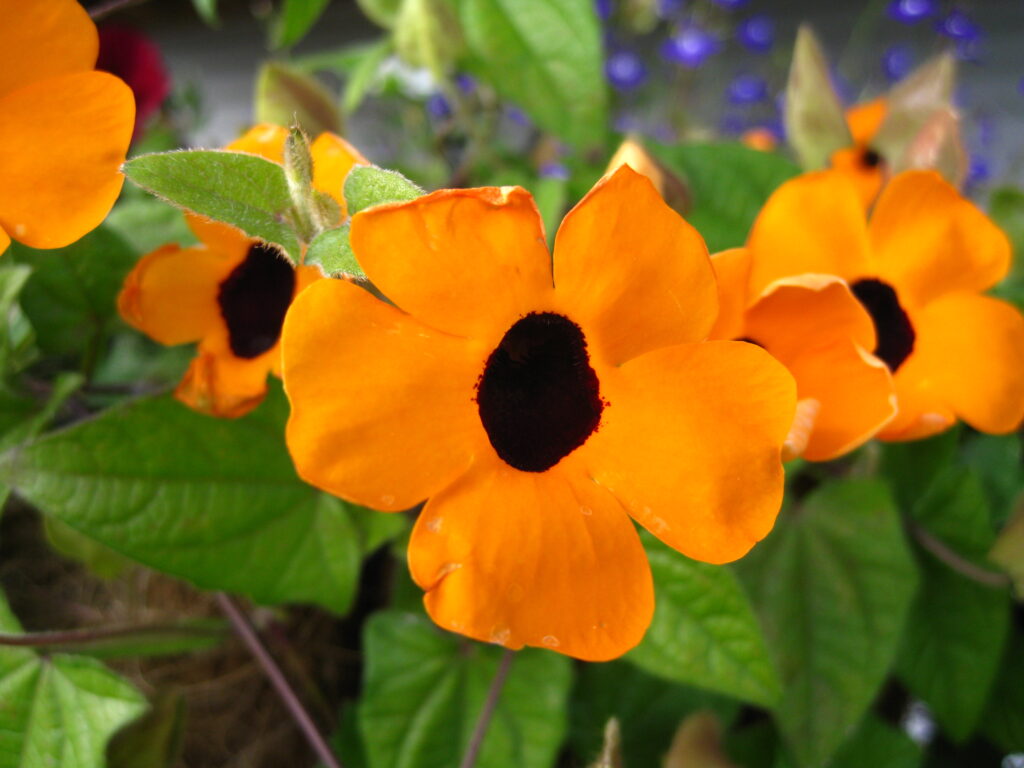At its core, Thanksgiving was and should remain a celebration and appreciation of the bounty of the land and those who are indigenous to the land. To me, the Thanksgiving meal is about celebrating what comes from the land where I live, not what was eaten in Jamestown, Virginia in the 1600s.
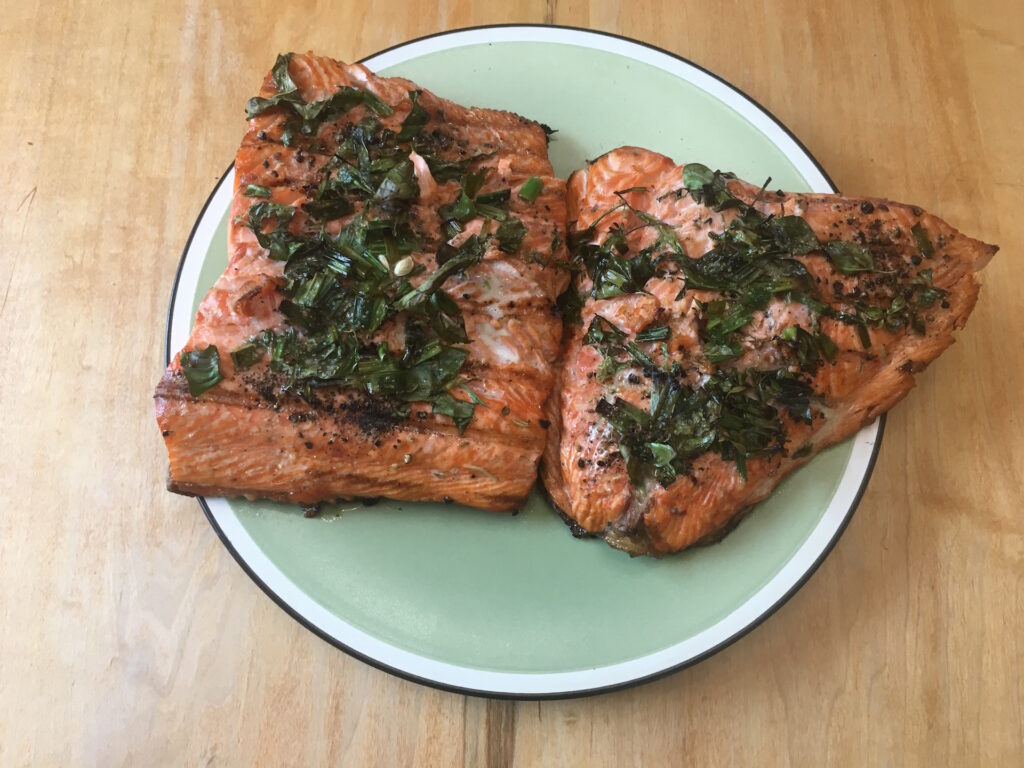
Don’t be afraid to feature salmon instead of turkey in your Thanksgiving feast. This salmon is grilled and topped with fresh herbs, garlic, butter, and lemon.
Do you have copious amounts of moose, caribou, salmon, blueberries, or cranberries in your freezer? Or carrots, potatoes, or winter squash stored from the garden? Why not showcase what you gathered, hunted, fished, or grew this year? Why not place an Alaskan meat or fish in the center of the table? Perhaps, prepared in an extra special way for the holidays? Instead of apple or pumpkin pie, why not serve spiced blueberry pie (I add 1/4 cup lemon, 1 teaspoon cinnamon, 1/4 teaspoon nutmeg, and 1/2 teaspoon of cardamom to my blueberry pie filling), cranberry pie with pecan crumble, or cranberry blueberry pie (use half cranberries and half blueberries)? Note: when I say cranberry in this article, I’m talking about Alaska low bush cranberries or lingonberries. Instead of standard dinner rolls, give a nod to the early miners of Alaska or sourdoughs and make sourdough rolls? Cooperative Extension has tons of recipes featuring Alaskan harvested, hunted, gathered or fished ingredients, as well as on how to cook with sourdough. Don’t worry, there aren’t any Thanksgiving police that will come to make sure you have a turkey, stuffing, and pumpkin pie at your celebration (okay maybe you do have one in your family). Continue reading
